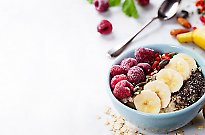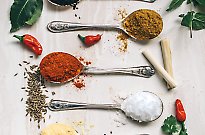
Why is the digestive system so important?

Your gut is remarkably sophisticated
How we eat is inherent to wellbeing, thus, so is how we digest. Early food philosopher Jean Anthelme Brillat-Savarin sparked the term “You are what you eat”, which serves as a reminder that wellbeing cannot be sustained without good food and a healthy, functioning gut with which to digest it. Naturopath SALLY MATHRICK explores what it means to understand our gut feelings.
It’s been called the second brain. The digestive system is remarkably sophisticated and profoundly affects us. It converts food into usable energy and structures for the continuation of our bodies’ health.
Digestion relies on an army of enzymes, acids, proteins and friendly bacteria to function optimally. The gastric nervous system has as many nerve cells as the spinal cord and may well be the seat of intuition. Stresses, pollutants and processed foods common in the modern world pose many toxic challenges to our highly evolved gastrointestinal tracts, which can benefit from various types of detoxification processes.
The gastrointestinal tract (GIT)
The gastrointestinal tract (GIT) is continuous with the external world. It starts at the lips and ends at the anus. Every day, substances move through the tract, presenting real or perceived immunological threats. The GIT has more immunological assaults than anywhere else in the human body. It produces 70 to 85 per cent of immune cells. Its mucous lining plays an important, protective role against gut infection, acting as a defence shield, stopping both pathogens and potentially irritating food molecules from contacting the cells lining the intestines. Having a healthy mucous lining is important to decrease gut inflammation.
An inflamed gut will create more mucous in response to inflammation. Inflammation also causes bloating, indigestion and pain and can lead to serious disease states over time. Mucilaginous foods and herbs, such as chia seeds, linseeds, slippery elm, liquorice root and fenugreek seeds support healthy mucous lining, as do beneficial fibres and the many nutrients contained in vegetables and fruits.
The GIT provides lodgings for over 100,000 billion bacteria from over 500 different species and strains. Many of these bacteria protect us from potential disease-causing bacteria. They support the breakdown of various nutrients and help create a nourishing environment. The importance of balanced healthy bacteria has been shown in the successful use of probiotics in the treatment of many diseases. For example, mainstream medical practice is increasingly adopting the use of probiotics for the treatment of allergies in children.
We know many antibiotic medicines disrupt bacterial strains in the GIT. The effects on beneficial bacteria of pesticides, hormones, preservatives, colourings and antibiotics found in modern foodstuffs are not as clear. Nor is how the digestive system’s highly evolved enzyme systems manage these synthetic compounds.
How digestion works
The majority of breakdown happens chemically, using a wide range of enzymes. Enzymes trigger changes in food structures.
Digestive enzymes come from glands secreted along the GIT, most notably the pancreas and salivary glands. If food is poorly chewed or full of synthetic compounds we don’t have enzymes for, then digestion can be impaired.
Raw foods contain enzymes to support their digestion. Examples are papain in paw paw and bromelain in pineapple. Enzymes are proteins. When proteins are cooked, they are damaged. Consequently, cooked food contains damaged enzymes and can place more burden on the digestive system. This fundamental understanding supports the idea of eating foods in their raw form and is evidenced in the radiance often displayed by people who eat a high percentage of raw foods. If eating more than 70 per cent raw foods, most people report a sense of lightness and digestive ease.
Gastric juices contain water, enzymes and hydrochloric acid. Juices decline with age, resulting in more flatulence, indigestion and bloating for some senior people. Digestion can be aided by including fennel, caraway, ginger, dill, anise, chilli and watercress with foods. Some nutrition experts suggest that this lack of secretion is due to the lack of enzymes available within the body to create sufficient levels of digestive enzymes. It may also be partly due to dehydration.
Poor digestion can manifest as systemic problems, such as mood swings, lethargy and even skin disease. If digestion is not thorough, toxic waste can build up along the tract and the fermentation and putrification of these wastes releases toxic by-products that are absorbed through the gut wall into the bloodstream.
The more protein (specifically animal protein) one eats, the more of these toxic by-products are created. This is because the breakdown of protein-rich foods forms compounds, such as phenol, indole, skatole and ammonia, which have detrimental impacts. The process of auto-intoxication was proposed by early nature doctors and is coming to be accepted by some areas of mainstream medical science too.
Calm colon
An acidic colon is a healthy colon. Vegetables help keep the colon acidic, balanced and will assist with the detoxification of the gut. Eating a high-protein diet creates an alkaline GIT environment. Eating less protein or choosing plant proteins that have inherent benefits of fibre reduces the negative effect. If choosing to eat animal proteins, ensuring they are accompanied by lots of vegetable fibre mitigates the protein breakdown toxicity.
People sensitive to gluten directly experience the gut-mind connection. When foods containing gluten (wheat, rye, oats, spelt and barley) are eaten, susceptible people experience fatigue or hazy thinking within a few minutes or a few hours. A peptide called zonulin, identified at the beginning of this century, seems to be involved in the permeability (or leakiness) of the GIT and brain barrier. People suffering from coeliac disease – an autoimmune disease triggered by gluten – were found to have high levels of zonulin, and consequently higher levels of gut and brain permeability, or leaky gut and brain. Studies are currently attempting to clarify the relationship of gluten, zonulin and excessive permeability.
What is the colon?
The colon is the body’s waste disposal system. There is debate about whether ‘regular’ means three times a day or once every three days. The late naturopath Dr Bernard Jensen suggested that defecation should occur every time we eat, and that auto-toxification occurs if we don’t. Physiologically, each time we eat, a peristaltic wave is triggered to stimulate defecation. Individuality plays a role in whether this movement is felt or heeded.
The GIT has 100 million neurons and secretes at least 20 different neurotransmitters. Its nervous system is called the enteric nervous system. It connects to the brain via the vagus nerve. This anatomy explains how we get butterflies in our stomachs or have gut feelings about things. If this system is functioning well, the innate knowing we have access to is quite profound.
The GIT is the true seat of health and disease. “We are what we eat” needs an addition: “We are how we eat and digest.” Optimal digestion not only nourishes us, it allows us access to our intuition and clear thinking. With this knowledge, we have an enormous amount of control over our and our world’s wellbeing.
Sally Mathrick is a practising naturopath. She runs Sparkle Wellness & Detox courses online, providing effective, holistic, individual approaches to wellness. For more information visit www.sparklewell.com.au


